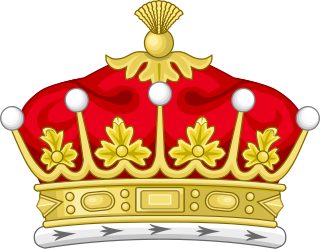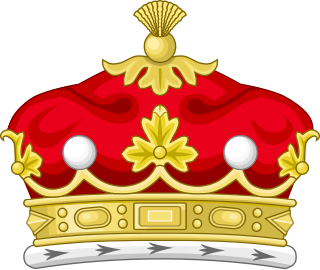 W
WEarl Cathcart is a title in the Peerage of the United Kingdom.
 W
WViscount Combermere, of Bhurtpore in the East Indies and of Combermere in the County Palatine of Chester, is a title in the Peerage of the United Kingdom. It was created in 1827 for the prominent military commander Stapleton Stapleton-Cotton, 1st Baron Combermere. He had already been created Baron Combermere, of Combermere in the County Palatine of Chester, in 1814, also in the Peerage of the United Kingdom. He had previously inherited the baronetcy, of Combermere in the County Palatine of Chester, that was created in the Baronetage of England on 29 March 1677 for his great-great-grandfather Robert Cotton.
 W
WDuke of Wellington is a title in the Peerage of the United Kingdom. The name derived from Wellington in Somerset, and the title was created in 1814 for Arthur Wellesley, 1st Marquess of Wellington, the Anglo-Irish military commander who is best known for leading the decisive victory with Field Marshal von Blücher over Napoleon's forces at Waterloo in Brabant. Wellesley later served twice as British prime minister.
 W
WViscount Exmouth, of Canonteign in the County of Devon, is a title in the Peerage of the United Kingdom.
 W
WMarquess of Aberdeen and Temair, in the County of Aberdeen, in the County of Meath and in the County of Argyll, is a title in the Peerage of the United Kingdom. It was created on 4 January 1916 for John Hamilton-Gordon, 7th Earl of Aberdeen.
 W
WViscount Hill, of Hawkstone and of Hardwicke in the County of Salop, is a title in the Peerage of the United Kingdom. It was created in 1842 for General Rowland Hill. He had already been created Baron Hill, of Almaraz and of Hawkstone in the County of Salop, in 1814, with remainder to the heirs male of his body, and Baron Hill, of Almarez and of Hawkestone and Hardwicke in the County of Salop, in 1816, with remainder to the heirs male of his elder brother John Hill. The viscountcy was created with the same special remainder. On the first Viscount's death in 1842, the barony of 1814 became extinct as he had no male issue, while he was succeeded in the barony of 1816 and the Viscountcy according to the special remainders by his nephew Sir Rowland Hill, 4th Baronet. His son, the 3rd Viscount, sat as a Conservative Member of Parliament for Shropshire North. In 1875, he assumed by Royal licence the additional surname of Clegg, which was that of his maternal grandfather. He inherited financial problems from his father which led to the breakup and sale of the family estates.
 W
WBaron Keith was a title that was created three times in British history, with all three creations in favour of the same person, Admiral the Honourable Sir George Keith Elphinstone. He was the fifth son of Charles Elphinstone, 10th Lord Elphinstone by his wife Lady Clementine, daughter of John Fleming, 6th Earl of Wigtown and Lady Mary, daughter of William Keith, 8th Earl Marischal. The first creation came in the Peerage of Ireland in 1797 when he was made Baron Keith, of Stonehaven Marrischal, with remainder in default of issue male of his own to his daughter and only child from his first marriage, Margaret Mercer Elphinstone, and the heirs male of her body. On 15 December 1801 he was created Baron Keith, of Stonehaven Marischal in the County of Kincardine, in the Peerage of the United Kingdom, with normal remainder to heirs male. In 1803 he was made Baron Keith, of Banheath in the County of Dumbarton, in the Peerage of the United Kingdom, with remainder to his daughter and only child from his first marriage, Margaret Mercer Elphinstone and the heirs male of her body. In 1814 Lord Keith was further honoured when he was made Viscount Keith in the Peerage of the United Kingdom, with normal remainder to heirs male.
 W
WThomas Graham, 1st Baron Lynedoch was a Scottish aristocrat, politician and British Army officer. After his education at Oxford, he inherited a substantial estate in Scotland, married and settled down to a quiet career as a landowning gentleman. However, with the death of his wife, when he was aged 42, he immersed himself in a military career, during the French Revolutionary Wars and the Napoleonic Wars.
 W
WMarquess of Linlithgow, in the County of Linlithgow or West Lothian, is a title in the Peerage of the United Kingdom. It was created on 23 October 1902 for John Hope, 7th Earl of Hopetoun. The current holder of the title is Adrian Hope.
 W
WMarquess of Londonderry, of the County of Londonderry, is a title in the Peerage of Ireland.
 W
WMarquess of Londonderry, of the County of Londonderry, is a title in the Peerage of Ireland.
 W
WDuke of Wellington is a title in the Peerage of the United Kingdom. The name derived from Wellington in Somerset, and the title was created in 1814 for Arthur Wellesley, 1st Marquess of Wellington, the Anglo-Irish military commander who is best known for leading the decisive victory with Field Marshal von Blücher over Napoleon's forces at Waterloo in Brabant. Wellesley later served twice as British prime minister.